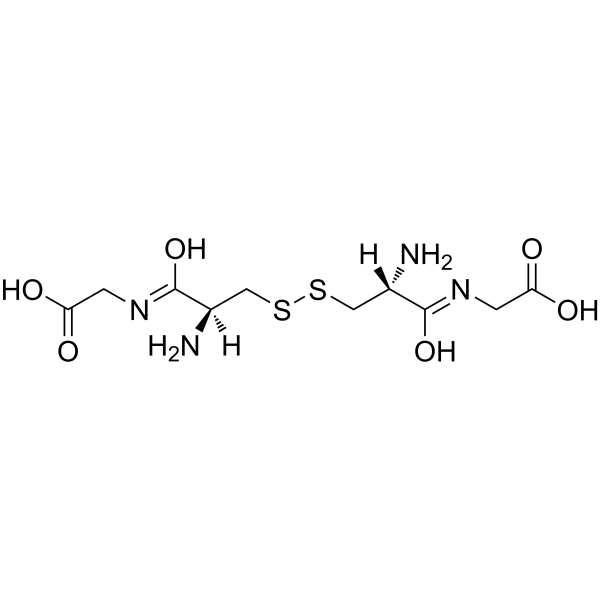Cys-Gly, oxidized

Cys-Gly, oxidized structure
|
Common Name | Cys-Gly, oxidized | ||
|---|---|---|---|---|
| CAS Number | 7729-20-6 | Molecular Weight | 354.40300 | |
| Density | 1.535g/cm3 | Boiling Point | 788.5ºC at 760mmHg | |
| Molecular Formula | C10H18N4O6S2 | Melting Point | N/A | |
| MSDS | USA | Flash Point | 430.7ºC | |
|
Cysteinyl-glycine reduction as marker for levodopa-induced oxidative stress in Parkinson's disease patients.
Mov. Disord 26 , 543-546, (2011) Oxidative stress is influenced by the thiol homeostasis, which determines the redox milieu. One of its components is Cysteinyl-glycine (Cys-Gly) generation, as its metabolic precursor is the free radicals scavenging glutathione. Levodopa is under suspicion to... |
|
|
Dug1p Is a Cys-Gly peptidase of the gamma-glutamyl cycle of Saccharomyces cerevisiae and represents a novel family of Cys-Gly peptidases.
J. Biol. Chem. 284 , 14493-14502, (2009) GSH metabolism in yeast is carried out by the gamma-glutamyl cycle as well as by the DUG complex. One of the last steps in the gamma-glutamyl cycle is the cleavage of Cys-Gly by a peptidase to the constitutent amino acids. Saccharomyces cerevisiae extracts ca... |
|
|
From cysteine to longer chain thiols: thermodynamic analysis of cadmium binding by phytochelatins and their fragments.
Metallomics 3 , 838-846, (2011) Isothermal Titration Calorimetry (ITC) was used to study the binding of Cd(2+) by phytochelatins ((γGlu-Cys)(n)-Gly, PC(n); n = 1-5) and their selected fragments (Cys, Cys-Gly and γGlu-Cys) in order to understand the influence of the chain length on the compl... |
|
|
Cys-Gly specific dipeptidase Dug1p from S. cerevisiae binds promiscuously to di-, tri-, and tetra-peptides: Peptide-protein interaction, homology modeling, and activity studies reveal a latent promiscuity in substrate recognition.
Biochimie 93 , 175-186, (2011) Dug1p is a recently identified novel dipeptidase and plays an important role in glutathione (GSH) degradation. To understand the mechanism of its substrate recognition and specificity towards Cys-Gly dipeptides, we characterized the solution properties of Dug... |